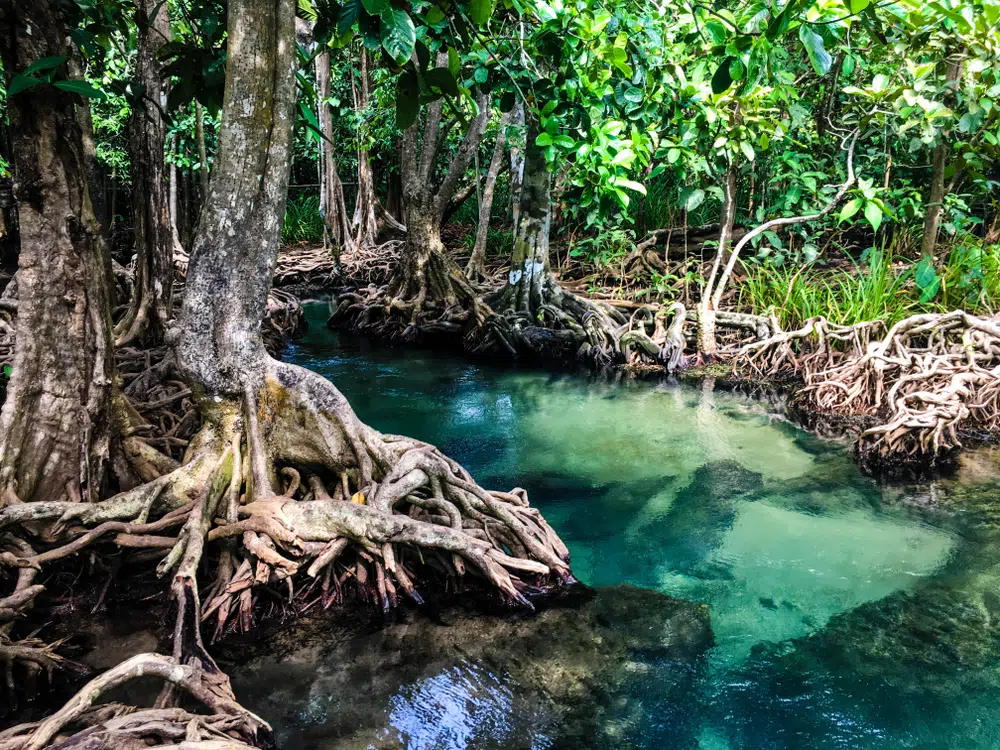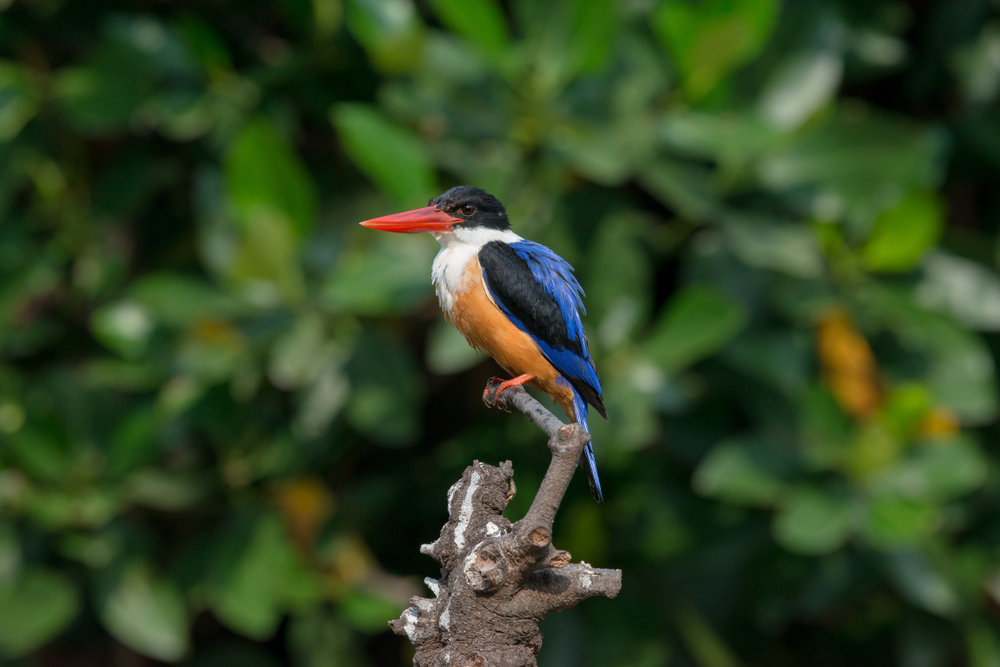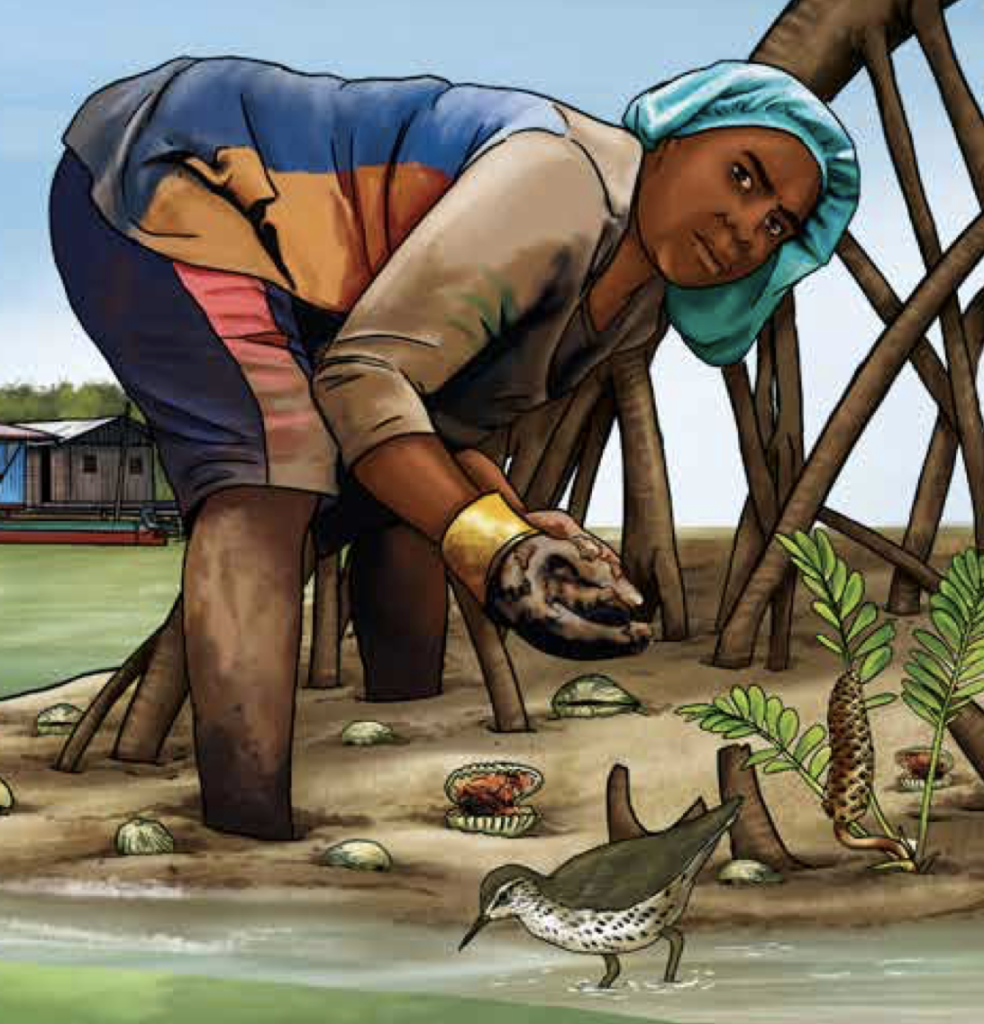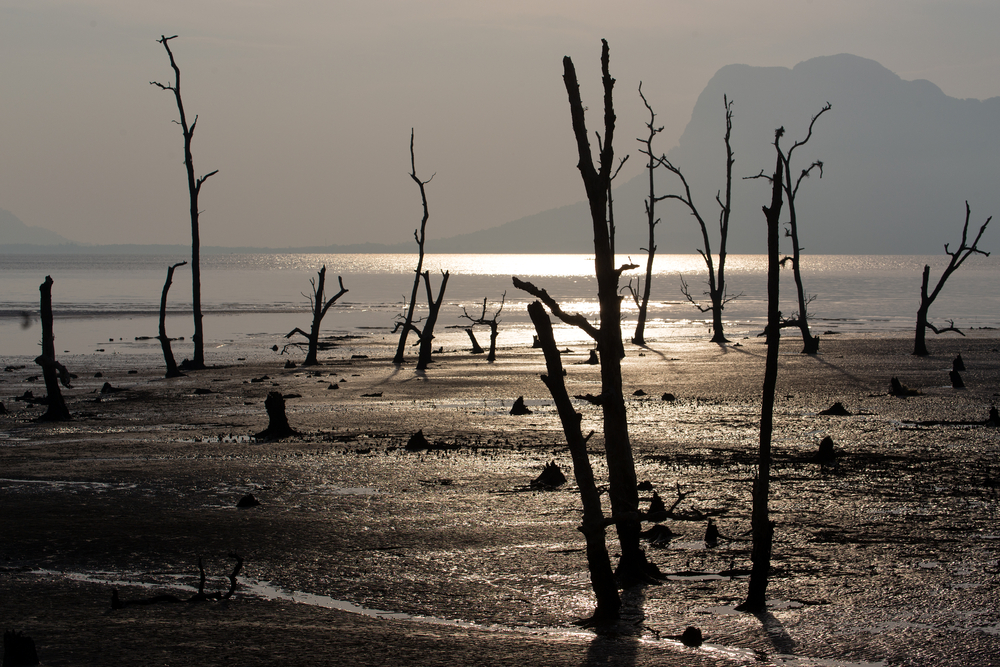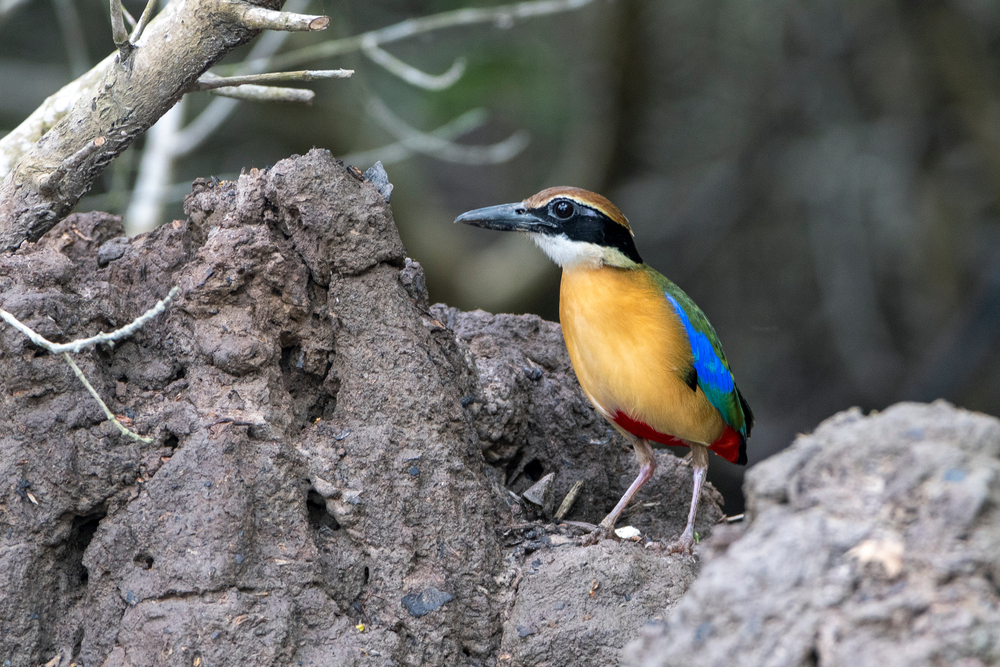Why Mangroves Are Making Waves: A Deep Dive
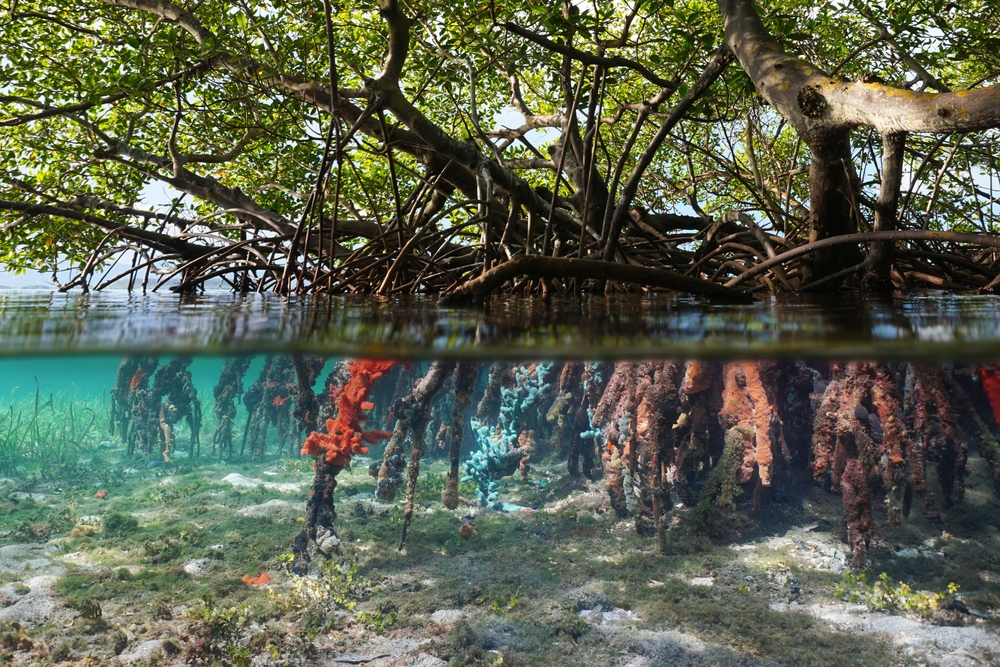
World Mangrove Day, celebrated annually on July 26th, is dedicated to raising awareness about the critical importance of mangrove ecosystems. At BirdLife International, we take immense pride in our Local Partner's tireless efforts on the frontline of mangrove conservation.
By Charlie Malcolm-McKay
Imagine stepping into a world where the land meets the sea, and twisted roots rise from waters like natural sculptures to create thriving ecosystems. These are mangroves, unique coastal forests found from the shimmering shores of Southeast Asia to the vast coastlines of the Americas, and the islands of the Caribbean and Oceania.
Mangroves, recognised for absorbing up to five times more carbon per hectare than tropical forests, are not merely carbon sinks. They are ecosystems rich in biodiversity, crucial for coastal protection and pivotal in supporting local communities.
At the COP28 UN Climate Change Conference in Dubai, mangrove forests emerged as a reason for hope and optimism, due to their exceptional ability to act as nature-based solutions for climate change mitigation and biodiversity preservation. This recognition led to the United Arab Emirates endorsement of the ‘Mangrove Breakthrough’ initiative, a coalition-led endeavour which committed $4 billion to preserve 15 million hectares of mangroves by 2030.
Mangroves are resilient barriers, shielding coastlines from erosive forces and extreme weather events. Their dense root systems not only stabilise shorelines but also provide a haven for bird biodiversity. These forests serve as nesting, breeding and feeding grounds for a diverse array of bird species, such as the Black-capped Kingfisher, Boat-billed Heron and Mangrove Pitta.
Mangroves are also vital to the survival of numerous migrating bird species, including the Western Sandpiper, which relies heavily on these habitats during its long migrating journey. The mangrove forests along Colombia’s Pacific coast serve as a crucial stopover site for these birds. Providing a rich feeding ground teeming with small invertebrates such as mollusks and crustaceans, which are essential for replenishing this species energy reserves.
BirdLife International, with over 120 global Partners, emphasises the crucial role of local communities in mangrove conservation. Asociación Calidris, BirdLife’s Partner in Colombia, exemplifies this through their collaboration with the Esfuerzo Pescador Community Council of Nariño. Located at the mouth of the Iscuandé River, Calidris supports the management of mangrove forests through a participatory science process.
Through a combination of local knowledge and scientific practice, community-centred governance models have been developed to ensure mangroves thrive, while supporting local livelihoods for generations. This has been achieved through the protection of piangua (edible clam) populations, which are a key indicator of ecosystem health and an important resource for the surrounding community.
In a recent report, Luis Fernando Castillo, the Executive Director of Asociación Calidris, highlighted the success of such a comprehensive and collaborative effort. He stated, “This significant effort has resulted in an effective monitoring scheme for the piangua and shorebirds, with the active participation of the local community being crucial.” This collaborative approach not only safeguards mangrove ecosystems but also exemplifies a sustainable model for mangrove conservation globally.
While our Partners are at the frontline of mangrove conservation it is important to acknowledge that their protection and restoration efforts must be considered within the wider framework of global climate change. There is a certain paradox behind initiatives such as the UAE’s Mangrove Breakthrough for there lies the possibility that these efforts might prove futile if fossil fuel consumption is not adequately phased-out.
Rising sea temperatures, a direct consequence of increased greenhouse gas emissions primarily from fossil fuel consumption, pose a severe threat to mangroves. These escalating temperatures can induce thermal stress, impede mangrove growth and exacerbate the frequency and intensity of tropical storms, leading to detrimental erosion and sedimentation.
Moreover, the rising sea level, another byproduct of global warming, threatens to submerge these vital habitats. Mangrove forests typically inhabit the intertidal zone, where land and water meet, making them inherently vulnerable to sea-level changes. As waters rise, mangroves can become submerged and destroyed.
Some mangroves may be able to adapt by migrating inland, but this natural relocation is often impeded by human developments and physical barriers, limiting their ability to find suitable new habitats. As a result, these ecosystems become trapped between the advancing sea and urbanised areas, a phenomenon often referred to as ‘coastal squeeze.’
The phenomenon of coastal squeeze underscores the critical importance of collaborating with local communities in the way BirdLife International does. Through organisations such as Asociación Calidris, weensure that conservation strategies are aligned with the socio-economic realities and needs of those living in proximity to mangroves.
This synergy between local action and global policy change is essential for the long-term success of conservation efforts. Without a concerted effort to reduce fossil fuel use and mitigate its impacts, even the most robust conservation efforts risk being undermined. Hence, the path forward must intertwine local community engagement with broader, systemic changes in climate policies.
